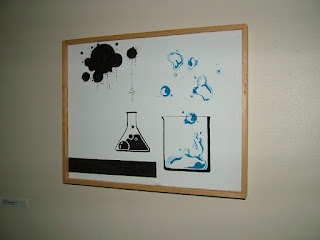
Camphill Village Kimberton Hills was honored to receive a Department of Environmental Protection Grant for an Educational Outreach Program in Sustainable Forestry Management. As the depletion of American native woodlands is ever increasing, along with the destruction of riparian buffers that protect the rivers and streams, it is more important than ever to educate others about why and how to preserve woodlands. This sustainable forestry program is a unique and important demonstration model within the region and can educate hundreds of students of all ages for years to come.
The public is invited to attend a FREE, two-day Fall Workshop
Saturday and Sunday either
SEPT 22 & 23, 9am – 4pm
SEPT 29 &30, 9am – 4pm
Participants will have the opportunity to experientially learn about watersheds and how best to sustainably manage forests to restore riparian buffers for watershed protection. Students will learn to identify and remove invasives, plant seedlings, test soil and help clear trails. The workshop will be led by the Kimberton Hills’ Estate Director, Alice Dworkin, and with specialized expertise provided by Mike Dunn, ISA certified arborist and owner of
Preservation Tree.
Topics taught may include: point and non-point source pollution; soil, tree and plant identification; biodiversity vs. monoculture; native eco-systems and human impact on destroying them as well as restoring them; different microsystems that include soil, animal and plant variation; riparian buffer and its effect on the watershed; habitat loss vs. preserving “interior forest”; and forests as natural resources.
Spaces are limited, sign-up now. We will continue to take registrations until spots are filled.
Workshop participants have additional opportunities, also free of charge:
1) Compete, as a group or individually, in anInterpretive Sign Competition in the winter. The winning signs will be placed along the trails in the Kimberton Hills forest for educational purposes.
2) Be Ambassadors in the Spring of 2013, leading primary and secondary students along the trails and teaching about what you have learned.
We encourage “teams” to sign up. To sign up and for more information, contact Lyla Kaplan,
lyla@camphillkimberton.org, 610-935-0300 xt 12.
About French Creek Watershed:
French Creek is a 22.6-mile-long tributary of the Schuylkill River. The French Creek valley was an important early industrial region, most notably for iron, such as the Hopewell Furnace National Historic Site that sits on French Creek. The Phoenix Iron Works in Phoenixville, a working foundry up until the 1980s, sits on the confluence of French Creek and the Schuylkill. Northern and Eastern Chester County residents are almost entirely dependent on groundwater for their water use. French Creek was designated a Pennsylvania Scenic River in 1982. In 1997 it was upgraded from High Quality to Exceptional Value and in 1998 was placed on the Conservation River Registry (Green Valleys Association).
Water quality of a watershed is improved by “riparian forest buffers,” or stands of trees and native shrubs and bushes ranging from 50-100 feet along streams and rivers (PA Clean Water Campaign). The regeneration of native trees, shrubs and bushes provides a healthy riparian buffer (PA DCNR), and can protect the water quality of French Creek.
About Kimberton Hills woodlands along French Creek:
There are 100 acres of forest that comprise Kimberton Hills which are in need of care and stewardship to continue to thrive and protect the air and water. These forests are referred to as “interior forests” and are considered an important resource in Eastern PA due to forest depletion. Kimberton Hills has 53.4 acres that directly border French Creek, which is a large portion of the entire creek. In addition, over 20 acres border tributary streams. These forests have become compromised, first in 1890 due to construction of the “Sowbelly Railroad” and later by deer. Now they are replete with invasive species which jeopardize the buffers because of their impact on reducing native plant biodiversity. Currently, the deer in combination with invasives threaten forest regrowth of native plants. The invasives are still currently limited mostly to the border areas and some recently cleared openings, but once the native plants are completely overcome, restoration will be extremely difficult and will no longer provide a forest buffer to protect the watershed.
More about Kimberton Hills:
Camphill Village Kimberton Hils, founded in 1972, is part of the international Camphill Movement that pioneered community life as a healthy alternative to institutionalization or isolated existences for youth and adults with developmental disabilities. On the donated 432 acres, 250 are agriculturally eased and 80% are dedicated to open space. The mission at Kimberton Hills is to encourage individuals, especially those with special needs, to discover and fulfill their developmental and creative potential within an agricultural and handcrafting community. In valuing persons of all abilities, Kimberton Hills seeks to foster a living and working environment that is sustainable, productive and beautiful. Residents and volunteers uniquely contribute to the community through meaningful vocations such as gardening, dairy farming, and working in the café, bakery and craft workshops. As the community cares for one another, it also nurtures and improves the land by practicing biodynamic and organic agriculture and raising environmental awareness. We have received numerous awards over the years, mostly recently the Chester County Citizens for Climate Protection Gene Wilson and the PA Horticultural Society’s Community Greening Award.
Kimberton Hills is located at 1601 Pughtown Road in Kimberton, PA -- west of Philadelphia, 5 miles from Phoenixville and 10 miles north of the PA 76 turnpike exit. GPS will not get you to the village, but Kimberton Whole Foods in Kimberton will. We will help registrants connect to each other for the option to carpool.










